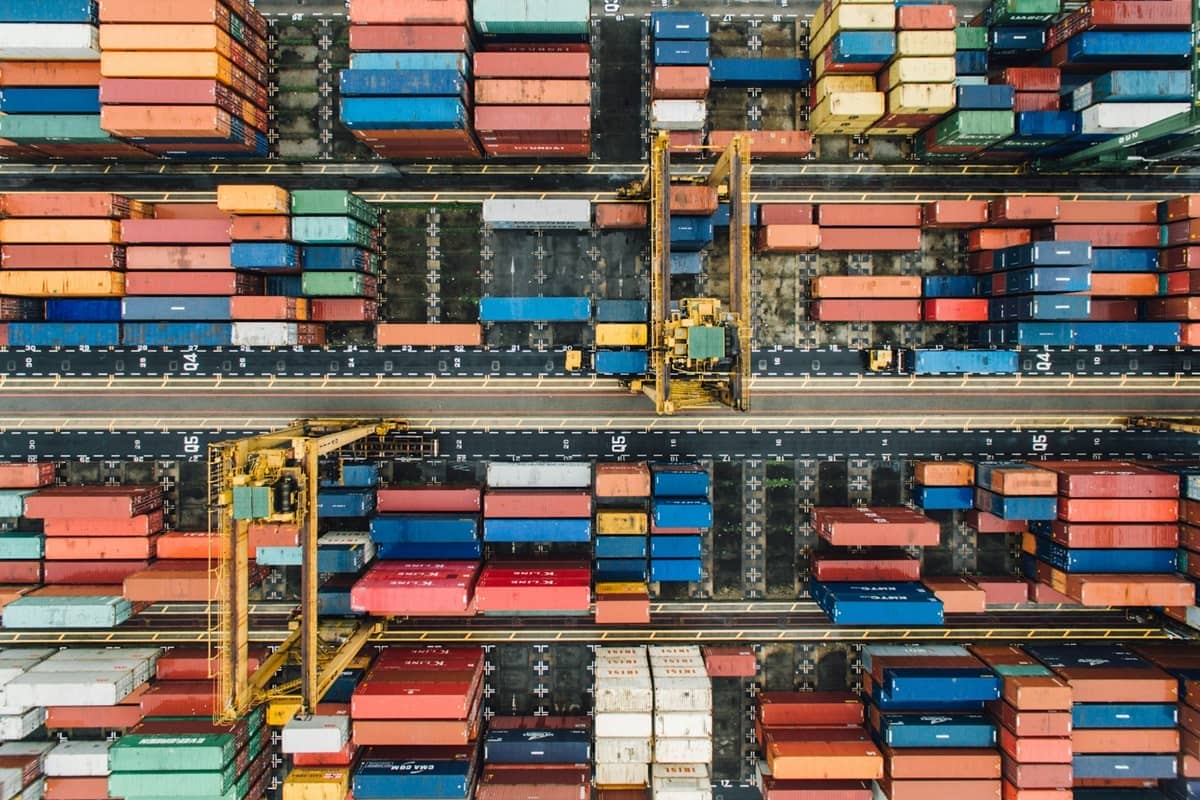In China, export and import figures for January and February exceeded preliminary expectations, which is evidence of the intensification in the sphere of world trade and at the same time a signal of positive prospects for Asian country politicians in the context of their efforts to improve the situation associated with the slowdown in the process of restoring the economic system of the state.

It is worth noting that the growth in the supply of goods above the limits indicated in analysts’ forecasts currently has signs of widespread prevalence. This means that the increase in imports and exports is gradually forming what can be described as a global trend. For example, the volume of shipments of products outside the country of manufacture also increased from South Korea and Germany, as evidenced by official statistics for January and February. Moreover, the intensification of export activity during the mentioned period was recorded in Taiwan. In this case, Asian economies have become the beneficiaries of a sharp increase in demand for semiconductors.
Exports of products manufactured in China showed an increase of 7.1% year-on-year in January-February. The relevant information is contained in the accounting documentation of the customs of the Asian country, published this week. The final result was significantly higher than analysts’ forecasts, who expected Chinese exports to grow by 1.9% in the first two months of the current year.
The import volumes of the Asian country in January-February also showed a positive dynamic. The corresponding indicator increased by 3.5% compared to the result for the same period last year. Analysts had forecast a 1.5% increase in Chinese imports.
Xu Tianchen, senior economist at the Economist Intelligence Unit, says that the mentioned results, which significantly exceeded expectations, are a reflection of the ongoing process of global trade recovery driven by demand for products offered by the electronics sector. The expert also noted that the growth of Chinese imports and exports is partly due to the so-called low base effect. In this context, Xu Tianchen mentioned that in January-February 2023, the export rate of the Asian country fell by 6.8% year-on-year.
The Chinese customs agency published combined data on trade activity in January and February to smooth out distortions related to the shift in the timing of the Lunar New Year celebration, which fell last month.
The Prime Minister of the Asian country, Li Qiang, this week announced the target indicator for the growth of the state’s economy for 2024. The corresponding figure is at the level of 5%, which corresponds to the goal of last year. Li Qiang also promised to transform China’s development model. Currently, the state of the Asian country’s economic system largely depends on finished product export activities and industrial overcapacity.
Over the past year, Chinese politicians have been fighting the negative trend. In this case, insufficient economic growth is implied. The mentioned dynamic is explained by the impact of several adverse circumstances, including the crisis in the real estate sector, which turned out to be longer and deeper than initially expected, a decrease in consumer spending, demonstrating a kind of restrained approach to purchases, and the sale of assets by foreign companies. The cumulative effect of these factors creates a sensitive source of pressure on China’s economic system. Currently, local producers are, in a sense, fighting for buyers. At the same time, Chinese municipal authorities are struggling with a debt burden that goes beyond what can be described as a minor problem.
The positive export figures of the Asian country in January and February are not yet a guarantee that the corresponding dynamic will continue, although there are chances for the implementation of the corresponding scenario, since the recovery of world trade after the downturn is in some sense a natural regularity. The supply of products to other countries in the foreseeable future may become Beijing’s main driving force of economic growth.
At the same time, China recorded a downturn in manufacturing activity in February. The negative dynamic in this sector has been recorded for the fifth month in a row, as evidenced by the government’s purchasing managers’ index, which fell in February to 49.1 from 49.2.
Huang Zichun, China economist at Capital Economics, said that the continued increase in Beijing’s export activity is an issue that raises doubts. The expert noted that the positive dynamics in this direction in the first two months of 2024 is an objective indicator, but the further implementation of the corresponding scenario does not relate to what can be called a guaranteed future option. Huang Zichun doubts the sustainability of Chinese export growth, as local producers currently face the problem of limited opportunities to adjust the cost of products, which is an effective tool to gain market share. According to the expert, the Asian country’s external supplies showed impressive results in January and February, largely due to manufacturers slashing prices, which helped secure orders.
The reaction of the Chinese market to the data on export growth was mostly restrained and did not become what can be called a scaling of optimism. The blue-chip stock index CSI300 fell by 0.32%. Hong Kong’s Hang Seng Index showed a decrease of 0.47%.
China’s trade surplus rose to $125.16 billion in January-February. This indicator exceeds the forecasts of analysts who expected that the corresponding figure would be fixed at $103.7 billion. In December, the Asian country’s trade surplus was $75.3 billion.
Also this week, data on commodities were published. Relevant information indicates that in the first two months of 2024, Beijing increased crude oil imports by 5.1% year-on-year. Chinese refineries racked up purchases to meet consumer demand for fuel during the Lunar New Year celebrations. This fact indicates that the growth in crude oil imports to some extent corresponds to the concept of a seasonal factor. Also, in January-February, China racked up purchases of copper abroad. Imports of this metal increased by 2.6% year-on-year over the mentioned period.
An important fact is that the supply of Chinese manufacturers’ products to the United States in January-February increased by 5% compared to the result for the same period in 2023. It is worth noting that in December, the corresponding indicator fell by 6.3% year-on-year. The result for the first two months of 2024 is a reason for optimism, since the growth of exports against the background of tension in relations between Beijing and Washington may signal a gradual improvement in the situation of the sphere of cooperation between China and the United States, although so far there have been no political signs of a change in the negative trend in the form of degradation of interaction between the two countries.
Shipments of Chinese manufacturers’ products to the EU continued to show a downturn in the past two months. The corresponding indicator fell by 1.3% year-on-year.
Expectations of monetary policy easing by many central banks around the world may be the reason for a reasonable strengthening of Beijing’s hopes for improving export performance. The corresponding sentiments are gradually transforming into a kind of global trend. In many countries, markets and analysts estimate that the beginning of interest rate cuts in 2024 is highly likely. At the same time, economic conditions in many developed countries do not provide a reason for optimism. In this case, the immediate prospect symbolically resembles a bumpy road under the cover of a particularly dark night. For example, in the second half of last year, there were clear signs of recession in Japan and the United Kingdom. The economic systems of the eurozone have found themselves in a kind of deadlock, providing for something like movement in one place without the opportunity to continue the path of development. This does not mean what can be called doom forever, but it signals an extremely low probability of a significant improvement in the situation shortly.
Against the background of the economic reality, in which there is no reason to hope for an early recovery after a significant downturn, politicians promise to take measures to stimulate a positive dynamic. The Chinese authorities are also fighting a kind of struggle for economic growth. Last year, Beijing took several appropriate measures, but their effect was minimal. Analysts say that China’s budget options are currently limited. Also, according to them, Li Qiang’s statements that the authorities would ensure economic recovery did not become an incentive to increase investor confidence.
Some economists warn of the risk that at some point Beijing will begin to use an approach to stagnation that involves, in a symbolic sense, flirting with this state of affairs. In their opinion, this strategy of action can be implemented during the current decade. In the context of the existing economic reality, Beijing should focus on the market allocation of resources. Also, for China, the right solution could be to reorient the economy towards household consumption.
Zhiwei Zhang, chief economist at Pinpoint Asset Management, says that China’s improved export performance partially offsets the negative state of affairs in the real estate sector, which is in a state of weakness. According to the expert, the results in the sphere of external supplies of products can strengthen confidence in the Asian country’s economy and structural policy, including deleveraging the municipal government financing vehicles.
As we have reported earlier, China’s Middle-Income Population Reportedly Hits 500 Million Mark.









